The free-wheeling gambler who created conservative General Motors
By Richard A. Wright
William Durant, unlike most of the early automotive pioneers, was not a tinkerer or a mechanic or an inventor - he was a salesman. In fact, he was a superb salesman; he could, in the words of one associate, "charm the birds from the trees."
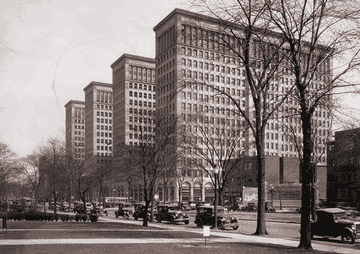
Grandson of a Michigan governor and a self-made millionaire in the horse-drawn carriage manufacturing business, Durant did not like the new automobiles that were beginning to appear around his home town of Flint. They were noisy and smelly, he said, and they frightened the animals.
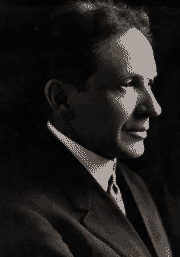
His feeling that the new machines were obnoxious was not a reaction against something that might threaten his Durant-Dort Carriage Co., largest maker of horse-drawn carriages in the country. He was a success, no doubt about it, a millionaire several times over. He did not fear innovation, he thrived on it. In fact, he drove a steam-powered Mobile car in 1902, not because he might want to buy one, but because he might want to sell them. He was unimpressed with it and with automobiles generally. Until, that is, he drove a car in 1904 built by David Dunbar Buick.
Buick was an innovative fellow who had made a fortune in the plumbing business, largely because he figured out how to porcelainize cast iron for tubs and sinks. He began to manufacture gasoline engines in 1900 and decided to design an automobile. But his business foundered. He tinkered a lot, but he did not produce cars commercially.
In 1903, Benjamin and Frank Briscoe took over Buick's business, then sold it to J.H. Whiting, owner of the Flint Wagon Works. Whiting convinced Durant to drive the Buick car, which featured a valve-in-head engine. Durant was impressed.
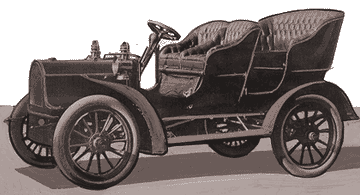
In 1904, Durant reorganized Buick Motor Co. and embarked on a remarkable adventure of empire building in which he created General Motors, lost it, created Chevrolet and took GM back. He finally lost it again, but he had a good time and he never lost heart.
After achieving success with the Buick car, Durant formed General Motors in New Jersey in 1908 and it bought Buick. With breathtaking speed, Durant's new GM acquired Oldsmobile, Cadillac and Oakland (later to be Pontiac), plus some supplier firms and a few lesser auto makers. In its first year of existence, GM had put together all of its current car-producing divisions except Chevrolet.
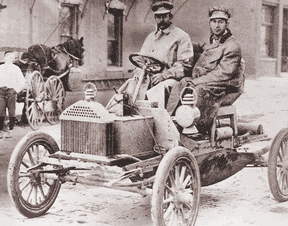
In its first two years, Durant had brought 30 firms into GM, including 11 auto makers. Not all of Durant's ventures were successful, however. He bought the Heany Electric Co., which was based on John Albert Heany's patent for an electric light bulb. General Electric sued and before the case was over, Heany, his lawyer and a patent office clerk were indicted on charges of falsifying the application. Heany was later exonerated, but the others went to jail and Durant lost faith in the inventor.
GM lost a lot of money in the Heany affair and it was undoubtedly a factor in the corporation's weakened financial condition which led to the ousting of Durant. A group of Eastern bankers agreed to bail out GM. They favored dissolving the company, but Wilfred Leland talked them out of it. Instead, the bankers were to receive an enormous bloc of stock and control of the board of directors. Durant was to resign and a five-man committee would run GM for the duration of the loan. Durant had lost his empire.
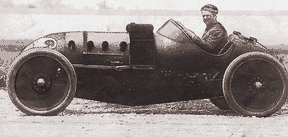
Durant did not retire from action, however. He formed a number of companies, including Chevrolet Motor Co. in partnership with Louis Chevrolet. Durant met Louis and Arthur Chevrolet when they came to America as part of a French racing team. (Louis was the more aggressive and more successful race driver of the two, so the prudent Durant hired Arthur as his chauffeur.)
Louis Chevrolet had built a high-quality car with his name on it. While Chevrolet was visiting Europe in 1913, Durant changed the design to a smaller car in an attempt to achieve high volume. The Royal Mail and the Baby Grand were the first to sport the now-famous Chevrolet "bowtie" insignia, a design motif Durant reportedly had seen in some wallpaper in a Paris hotel. Chevrolet didn't like what Durant had done. He quit the company.
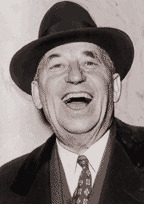
Meanwhile, Durant's Chevrolets were a great sales success. The company grew rapidly and Durant used profits to buy up GM stock. GM, meanwhile, was coming back out of trouble under the guidance of Charles Nash, a Durant protege who had once headed Buick and now was president of GM, and the new head of Buick, Walter P. Chrysler.
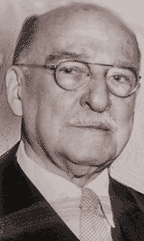
By the time of the board meeting in 1916, Durant's Chevrolet had bought up almost half of the outstanding GM stock. Nash, unaware of that, called Durant aside before the meeting. The trust agreement with the banks was running out and the majority of the board had agreed to renew it, Nash told Durant. "So let's not have any trouble."
"There won't be any trouble, Charlie," Durant said. "We won't renew the agreement, but there won't be any trouble. It just so happens that I own General Motors."
Durant nominated Pierre du Pont, who was trusted by the bankers, as chairman. Chevrolet was to be merged into GM. By the following May, the deal was complete and Durant had GM again. He met with Nash.
"Well, Charlie, you're through," he told his former employee who he felt had thrown in his lot with the bankers.
Durant became president of GM for the first time. He would lose GM again, but in early 1917, GM was strong and the future looked bright.
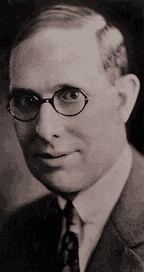
Upon regaining control of General Motors, Durant's first act was to fire Nash. Nash took over the ailing Jeffery Motors (which became Nash, then Nash-Kelvinator and in 1954 merged with Hudson to form American Motors). His second was to give Walter P. Chrysler a raise. Chrysler was head of Buick, a job for which Nash, no spendthrift, had paid him $50,000 a year. Durant had heard that Chrysler was making a bid to take over Packard and he offered him $500,000 a year to continue at Buick. Chrysler stayed.
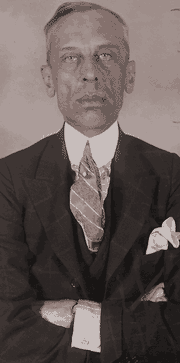
That same year, Durant made one of GM's most important acquisitions: United Motors Corp., a combination of parts and accessories makers which included Delco, New Departure and Hyatt Roller Bearing Co. In addition to the products it brought into the GM fold, it also brought in Delco's Charles Kettering and the president of Hyatt, Alfred P. Sloan Jr.
Part of the deal when Durant regained GM was a division of the board of directors -- six named by Durant, six by the bankers and three to be neutral. Pierre S. du Pont, head of the chemical giant, became chairman, nominated by Durant and trusted by all. One of the neutrals was John Jacob Raskob, a close du Pont aide. In the years ahead, Johnny Raskob turned out to be Durant's most powerful ally in his empire-building spree.
With the end of the World War I came boom times for the auto business. Durant began buying companies, including a 60 percent interest in Fisher Body. In 1919, GM of Canada and General Motors Acceptance Corp. were created. Encouraged by Raskob, who was able to secure financing with du Pont money and connections, Durant continued to expand GM's empire, ignoring more cautious voices.
Durant ordered construction of the General Motors Building on West Grand Blvd. in Detroit, to be the largest office building in the world. (In fact, it was to be called the Durant Building and it has the initial "D" at its corners near the top in the manner of Napoleon, who decreed the letter "N" be put on buildings erected in Paris during his reign.)
Irked by Durant's management style, Chrysler quit. The action shook GM, particularly Sloan.
Car sales declined, inventories began mounting, the bond market was weakening and GM was in a financial bind. GM's stock price slid, despite heavy buying by Durant with his personal fortune in an effort to prop up the stock. He bought on margin, often only 10 percent.

Fearful that his personal failure would be tied to GM, which itself owed $80 million to the banks, the bankers demanded that Durant resign. Raskob and du Pont came up with a proposal to buy Durant out. Forced to sell at $9.50, he had lost about $100 million of his own money.
The deal was consummated and he resigned on a Friday. Monday, GM opened at $16.50. What Durant had failed to do with his millions of dollars, he finally did by resigning. GM was turned around.
About two months after his second and final ouster from General Motors in late 1920, Durant incorporated Durant Motors. He had no car, but he had the faith of investors and good will of dealers. Before production began in 1921 of the Durant Four, he had 30,000 dealer orders. The next year, he brought out a low-priced car, the Star, to compete with Ford and Chevrolet.
Durant was on his way again. He added nameplates -- the Flint, the Eagle, the Princeton and the Mason truck. To compete with Cadillac, Packard and Lincoln, he acquired Locomobile. He gobbled up supplier firms. In 1927, he announced formation of Consolidated Motors, clearly intended to challenge GM. It would include the Star, Moon, Chandler, Gardner, Hupmobile, Jordan and Peerless. But it never became a reality, because Durant was again in financial trouble.
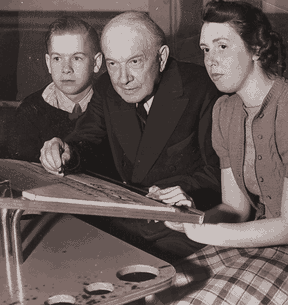
A major figure in the bull market of the '20s, Durant had amassed a $50-million fortune by 1927, but displayed his old weakness of losing interest in day-to-day management of his company in favor of empire building and stock manipulation.
When the crash came in '29, Durant was hit hard. In 1933, Durant Motors went broke. He was down, but not out.
He still had a plant in Lansing and he signed a deal to build and market the Mathis, a small French car. But in the depths of the Depression, it never got off the ground. In 1936, William Durant filed in bankruptcy, claiming debts of $914,231 and assets of $250.
In 1940, he opened a bowling alley in Flint, the North Flint Recreation Center. Always thinking big, he had plans for 50 such centers across the country. He suffered a massive stroke in 1942, shortly after a trip to Nevada to investigate a venture in mining cinnabar, a mercury ore.
He and his wife moved to New York, where they lived quietly, supported in part not by the General Motors he had created, but by four long-time associates -- C.S. Mott, R.S. McLaughlin, John Thomas Smith and Alfred P. Sloan.
Durant died in that apartment March 18, 1947.
Researchers: Vivian Baulch, Linda Culpepper, Kay Houston, Anita Mack, Laurie Marzejka, Julie Morris, Jenny Nolan, Pat Zacharias, Wendy Culpepper
Editorial and production: Ray Jeskey, Larry Wright, Alex Vida
